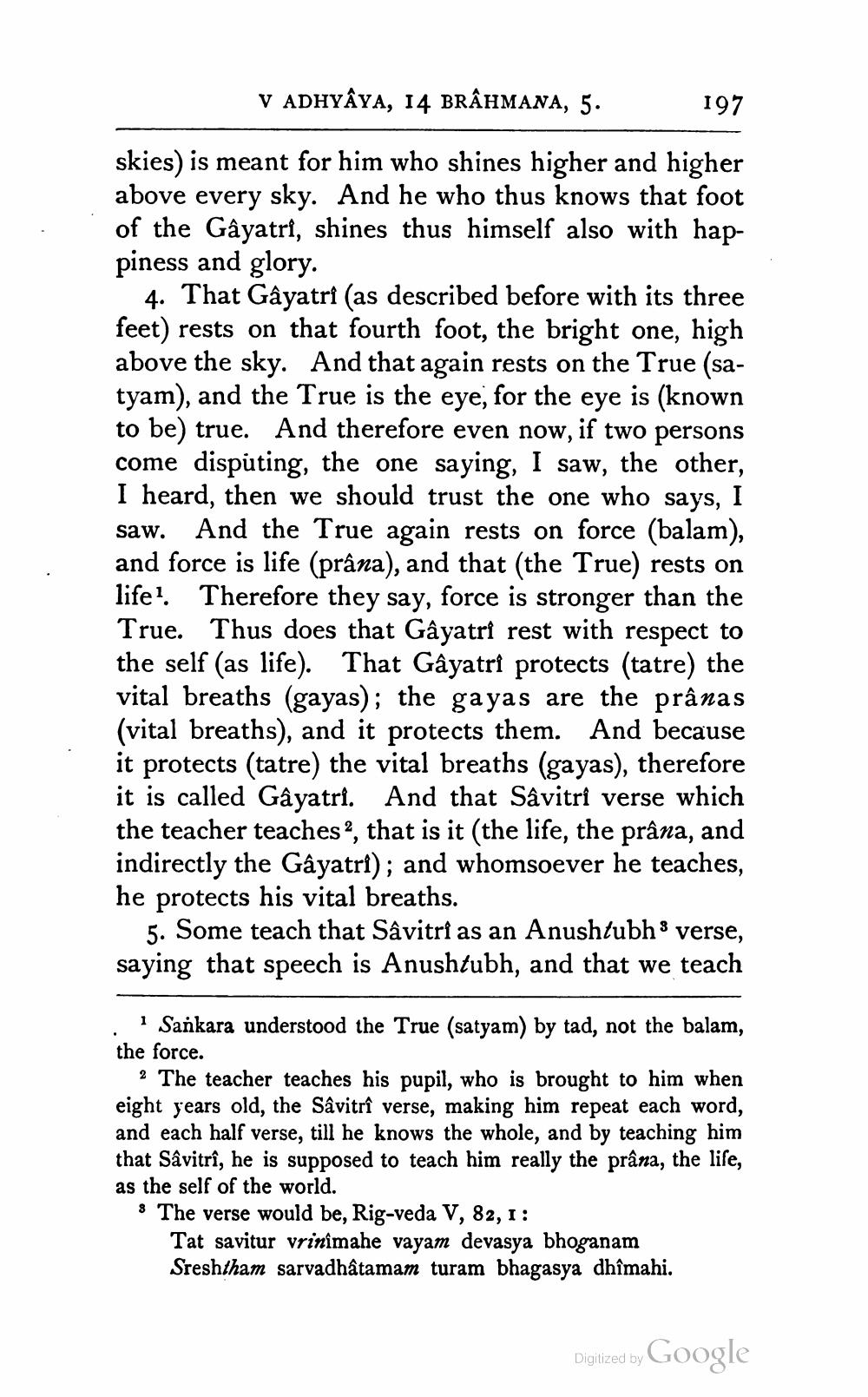________________
V ADHYÂYA, 14 BRÂHMANA, 5.
197
skies) is meant for him who shines higher and higher above every sky. And he who thus knows that foot of the Gâyatri, shines thus himself also with happiness and glory.
4. That Gâyatri (as described before with its three feet) rests on that fourth foot, the bright one, high above the sky. And that again rests on the True (satyam), and the True is the eye, for the eye is (known to be true. And therefore even now, if two persons come disputing, the one saying, I saw, the other, I heard, then we should trust the one who says, I saw. And the True again rests on force (balam), and force is life (prâna), and that (the True) rests on life? Therefore they say, force is stronger than the True. Thus does that Gâyatri rest with respect to the self (as life). That Gâyatri protects (tatre) the vital breaths (gayas); the gayas are the prânas (vital breaths), and it protects them. And because it protects (tatre) the vital breaths (gayas), therefore it is called Gâyatri. And that Sâvitri verse which the teacher teaches, that is it (the life, the prâna, and indirectly the Gâyatri); and whomsoever he teaches, he protects his vital breaths.
5. Some teach that Sâvitri as an Anushtubhs verse, saying that speech is Anushtubh, and that we teach
· Sankara understood the True (satyam) by tad, not the balam, the force.
? The teacher teaches his pupil, who is brought to him when eight years old, the Sâvitrî verse, making him repeat each word, and each half verse, till he knows the whole, and by teaching him that Sâvitrî, he is supposed to teach him really the prâna, the life, as the self of the world. 3 The verse would be, Rig-veda V, 82, 1:
Tat savitur vrinimahe vayam devasya bhoganam Sreshtham sarvadhâtamam turam bhagasya dhîmahi.
Digitized by Google




